#129: Phellinus igniarius and its use as a Tobacco Additive
Phellinus igniarius is probably the most dangerous regularly-consumed mushroom. By itself, the mushroom is pretty much useless. However, many Native American groups discovered that the ashes of igniarius will increase the buzz of chewing tobacco. Today, this practice is particularly widespread among Native Alaskans. Despite attempts by health agencies to discourage this practice, usage rates are still above 50%.
Before I describe the mushroom and its preparation process further, I feel it necessary to recommend against trying this yourself. The use of tobacco carries with it the risk of many health problems. P. igniarius increases the amount of nicotine available to your body, which exacerbates these health issues. The information presented in this post is not intended for practical use.
P. igniarius is a parasitic/saprobic conk that can be found growing on a variety of hardwood trees in North America and Europe. Its broad host range may indicate that P. igniarius is actually a group of closely-related species. The European version seems to be more prevalent on willow trees, while in North America it is most commonly found on birch trees. P. igniarius infects living trees and decomposes the wood of dead trees. It causes a white rot, meaning that it breaks down lignin and leaves behind the white, stringy cellulose.
Like other related polypores, P. igniarius produces woody, hoof-shaped brackets on the sides of trees. The medium-sized mushroom is 10-40cm (4-16in) across and 5-10cm (2-4in) thick. It has no stipe and is instead flush against the tree on one edge (a “bracket” or “conk”). The mushroom grows in roughly the shape of a hoof: somewhere between the shape of an upside-down V and an upside-down U. P. igniarius has a top that is brownish at first, but soon becomes gray and finally turns black and develops deep cracks. Concentric rings are usually visible on the mushroom’s cap. The mushroom is perennial, meaning that a new layer is added onto the bottom of the mushroom every year. This new layer is responsible for the concentric rings. On the bottom, the spore-producing layer has a velvety texture and features pores that are gray-brown to red-brown. The distinct combination of colors distinguishes this mushroom from most other conks.
The mushroom’s most interesting feature is, of course, how it interacts with nicotine. Plants produce many alkaloids, including nicotine, caffeine, opium, and cocaine. The effects of all of these can be enhanced by adding lime or various kinds of ash. These compounds contain alkalines, which serve to increase the pH of the plant preparation. This makes it easier for the alkaloids to be extracted from the plants and absorbed by the body. As it turns out, P. igniarius ash contains high concentrations of various (alkaline) metal ions. Among these are potentially dangerous lead ions, but the health effects of lead in P. igniarius have not been studied.
The use of P. igniarius ash by Native Americans to enhance the effect of nicotine has been known to researchers since the late 19th century. However, it seems likely that P. igniarius was used before the introduction of tobacco. There are scattered records of the mushroom being chewed with Basalm Poplar bark or smoked on its own, which may point to a broader historic use of the mushroom. P. igniarius became very important after tobacco was introduced (which was before contact with Europeans in Eastern North America but as late as the 18th century in Alaska).
The most extensive records of the use of P. igniarius come from Alaskan cultures, but museum collections indicate that the mushroom was used all across the continent. Due to the prevalence of records from and continued use in Eskimo communities, the process of preparing P. igniarius is defined using Eskimo terminology.
P. igniarius preparation is fairly straightforward. First, the mushrooms are collected from birch trees found in inland forests. This is a time-consuming job, so people who collect P. igniarius usually bring back more than they can use. Excess mushrooms are sold in the town for an easy profit. Second, the mushrooms are air-dried for a few weeks and then burned. The resultant ash is called “araq.” Some people prefer to separate the white ash from the solid chunks of burnt fungus, while others keep both parts of the ash. Third, the ash is combined with tobacco leaves to produce a mixture called “iqmik.” Historically, tobacco was chopped up, mixed with the ash, formed into balls, and given to women to chew. Chewing would ensure that the mixture was well-blended. After this, the iqmik would be given to men, who would place it in their mouths without chewing and let the juices run down their throats. Today, users generally mix their own iqmik. The ash and tobacco leaves are mixed together, chewed a little bit, and then stored for later.
Traditional storage boxes for iqmik were ornate, carved boxes made out of wood, bone, or ivory. The time involved in making such a box demonstrates how important iqmik was to a variety of Native American cultures. Museums have collections of fungus ash boxes found from Alaska to Labrador, indicating that the use of P. igniarius was widespread among native North Americans. Although modern iqmik boxes are simple plastic containers, iqmik is no less valuable. In 2002, a 15g bag of fungus ash sold for between $15 and $20 and 450g of tobacco leaves sold for $10. A large spoonful of fungus ash is used for each wad of tobacco, so iqmik quickly becomes expensive.
The use of iqmik is a serious problem in modern native Alaskan communities. In 2005, about 50% of Eskimo people used iqmik, including children as young as five. Among pregnant women, usage rates jump to around 80%. Processed tobacco products like cigarettes are seen as less natural, so women avoid using these during pregnancy. Unfortunately, iqmik – the all-natural replacement for commercial tobacco – is more efficient at delivering nicotine to the body. This increases the likelihood that the unborn child will become addicted to nicotine and may result in other complications. Nicotine poisoning is also common among iqmik users. The symptoms of nicotine poisoning include: increased heart rate, vomiting, and dizziness. However, this condition is temporary and is only a factor when iqmik is first placed in the mouth. Health professionals have been trying to educate the public about the dangers of using iqmik, but have not yet been very successful.
See Further:
http://botit.botany.wisc.edu/toms_fungi/nov2005.html
http://forestpathology.cfans.umn.edu/pdf/Phellinus.PDF
http://forestpathology.cfans.umn.edu/pdf/Phellinus%20igniarius.pdf
http://www.first-nature.com/fungi/phellinus-igniarius.php
http://www.rogersmushrooms.com/gallery/DisplayBlock~bid~6605~gid~~source~gallerydefault.asp

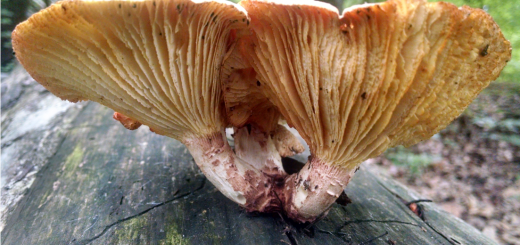
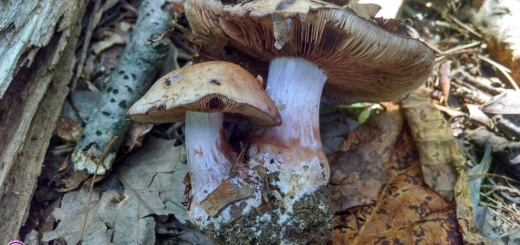
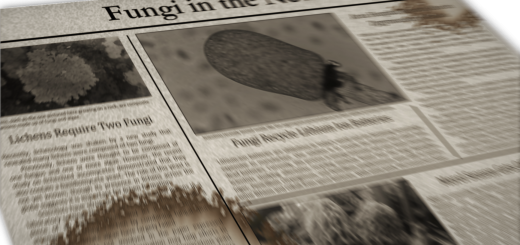





![#011: Characteristics of Kingdom Fungi [Archived]](https://www.fungusfactfriday.com/wp-content/themes/hueman/assets/front/img/thumb-small-empty.png)

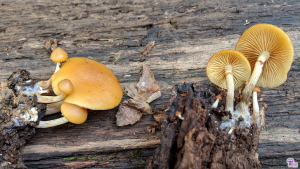
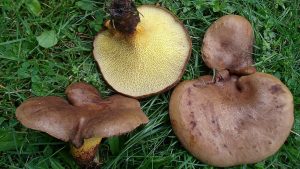
This is an opinion article claiming this mushroom is dangerous and medically uswless…. A quick Google search brings up several articles, some scientific, which point to the health benefits of this musroom.
I’m sorry you feel that way. I try to be as unbiased as possible in my posts. In this one, as you can see from the title, I chose to focus on how P. igniarius is used by Alaskan cultures because that is a fascinating story. Unfortunately, it casts the mushroom in a negative light due to its connection to tobacco. In fact, the health problems I reference are the result of tobacco use (which is verifiably dangerous), not the mushroom itself. As for medicinal properties, it’s hard to find reliable information for P. igniarius. There’s not much information about its historical medicinal use and the scientific studies aren’t clinical trials that assess the mushroom’s holistic health benefits (honestly, science isn’t well equipped to assess the long-term medicinal benefits of entire mushrooms). With no history of use and limited scientific evidence, I didn’t feel I could accurately comment on the mushroom’s medicinal benefits — so I tried to avoid doing so.
Unfortunately, this is one of my earlier format posts, so I don’t have citations for each sentence. However, all the information I used in the post can be verified by checking the sources listed at the bottom of the page. These consist of a couple universities and a couple established websites focused on mushrooms (Roger’s Mushrooms has been out of order for a while, though).
You state: “By itself, the mushroom is pretty much useless.” However, that does not appear to be the case. Regarding traditional and possible current medicinal uses of the mushroom, I suggest you search again: there appear to be a number of recent articles and papers about this. For instance:
https://www.ncbi.nlm.nih.gov/pmc/articles/PMC4374876/
“The basidiomycetous mushroom Phellinus igniarius (L.) Quel. has been used as traditional medicine in various Asian countries for many years. ”
https://www.hindawi.com/journals/bmri/2014/218274/
https://www.sciencedirect.com/science/article/abs/pii/S075333221736849X
Thanks, and I’m glad you feel comfortable doing your own research – that is an invaluable skill! I will consider rewriting that section when I update this page, although I’d prefer something more detailed than the generic statements in those articles. Does anyone who has posted comments actually use P. igniarius medicinally? If so, how do you use it and what do you use it to treat?
There are many studies showing that Phellinus igniarius has medical benefits at fighting tumors, suppressing certain strains of virus, and boosting the immune system, to name just a few. You keep telling people to look things up. Go to scholar.google.com, and type in phellinus igniarius. Over 5,700 articles come up. https://www.sciencedirect.com/science/article/pii/S1567576910004005
https://www.sciencedirect.com/science/article/abs/pii/S0144861715006426
https://link.springer.com/content/pdf/10.1007/s12275-013-3384-2.pdf
The mushroom is considered particularly useful for autoimmune diseases and may improve Treg cell count. Plenty of studies… we are not the ones publishing false information this article needs updating.